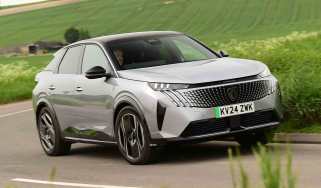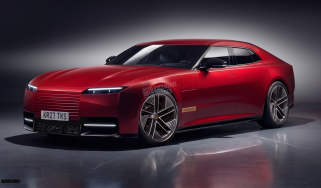Reverse parking explained
Reversing can be a daunting skill to learn for new drivers, but it’s easy with some simple advice. Here’s all you need to know

Ask most learner drivers or those who have just passed their driving test what is the trickiest skill to master, and reversing will be the number one answer. It’s easy to understand why, because reversing requires all the new-found abilities you’ve learned – and then using them to make the car go backwards. However, reversing doesn’t have to be difficult, as we’re here to explain.
What is reversing?
Reversing is making the car go in the opposite (reverse) direction to its usual forward travel. There are different types of reversing manoeuvres, which we’ll look at more closely below, but all use the same basic driving skills and awareness.
To back the car up, you need to select reverse gear, whether it’s a manual or automatic gearbox in the vehicle. Slow speed and smooth steering are both key to controlled, safe reversing.
How to reverse safely
There are four basic types of reversing moves in a car. These are reversing in a straight line, bay parking (reverse and forward), parallel parking and around a corner.
Straight line reverse
As a learner, it’s best to start with reversing in a straight line to get a feel for going backwards in the car, using the mirrors and looking over your shoulder to see where it needs to be. This also helps you learn how to check the car’s surroundings for hazards such as pedestrians, cyclists, other vehicles and fixed objects like lampposts, signs, bollards and trees.
On a straight road, come to a complete stop when it’s safe to do so. Apply the handbrake, check all around you using the mirrors and over your shoulder, and then select reverse gear. Release the handbrake and clutch while applying very gentle pressure to the throttle pedal. The car will now begin to reverse slowly. Keep the steering straight and don’t turn the steering wheel. You can use the kerb’s reflection in the left-hand door mirror as a guide to remain straight. To stop, apply the brake and clutch (if the car has a manual gearbox), and when you come to a halt, reapply the handbrake. Practise this until you are happy and comfortable with this manoeuvre.
With reversing in a straight line mastered, you are ready to move on to the other types of reversing.
Reversing around a corner
Next, we’ll look at reversing around a corner, which is not a mandatory part of the driving test, but a very useful skill to learn.
Choose a safe corner and indicate to let other traffic know you are pulling over, coming to a stop just past the corner (which will be on the left side). Leave a little more space between the car and kerb than you normally would when parking to help with the reversing move.
You then need to assess the angle of the corner and any potential hazards surrounding it – for example, parked cars, road signs, children playing etc. With that done, the procedure to begin the reverse is the same as for reversing in a straight line.
However, as you start to reverse the car, you need to find the ‘point of turning’. This is when you can see the start of the corner’s bend appear in the left-hand door mirror. It’s also usually when the left-hand rear wheel has just passed the start of the corner. Begin turning the steering wheel to the left and continue reversing slowly. Keep an eye on the left-hand door mirror to guide how much steering lock is needed and adjust the steering to suit, maintaining a constant distance between the car and kerb.
As the corner straightens, start to straighten the steering wheel. When the car is round the corner, bring it to a safe stop, apply the handbrake and take it out of reverse and put it into neutral.
Bay parking
The same technique applies to bay parking in a car park you might find at the supermarket or in a multi-storey. To reverse bay park, you need to find a parking space that is free and not hindered by other cars parked across the white lines.
When you find a space, indicate and pull up just past the bay. Leave plenty of space between your car and the line of parking bays. Then follow the same routine as reversing around a corner. Don’t worry if you don’t get the car perfectly between the lines first time, as you can move it forward when it’s safe and straighten it up.
Forward parking into a bay is when you drive right in, with the car nose first to the rear of the parking space. Many drivers do this when they know they will have shopping to put in the boot when they return to the car.
This requires you to reverse out of the bay. Check all around to make sure it’s safe to select reverse gear, and begin to back the car out of the space in a straight line. Always keep looking for other cars and pedestrians, and be prepared to stop.
When your car’s door mirrors are level with the front of the parked cars either side of you, start to turn the steering wheel. As the front of your car moves clear of surrounding parked cars, you can turn the wheel more. When your car is at a right angle, or as close as possible in the available room, apply the brake and clutch (if it’s a manual car), and then select first gear. You can now drive forwards and head off.
Parallel parking
Lastly, we come to parallel parking, which is the type of reversing many drivers fear the most, as it requires you to steer the car in two directions to achieve a smooth, safe park.
There’s nothing to be wary of, though, as there are some simple rules that will make you a master parker in no time.
Firstly, you need to find a parking space that’s long enough for your car to fit into it. When you find one, indicate and come to a safe stop just in front of the space. Select reverse gear and when your car’s rear wheel is level with the back of the bumper of the car in front of the space, turn the steering wheel fully to the left.
Keep reversing slowly until you can see the kerb in your car’s left-hand door mirror. Now turn the steering full to the right, making sure the front of your car is clear of the car ahead of the space. When your car is parallel to the kerb, straighten the steering. You may need to adjust the car’s position slightly to get it close enough to the kerb. When it is, apply the handbrake and put the gearbox into neutral.
Are there any gadgets to help with reversing?
There’s lots of tech to assist with reversing. Many modern cars now have parking sensors to warn when your car is getting close to other objects. They can be a great help when reversing, but you still need to be able to judge for yourself when the car is too close to another vehicle or hazard.
Reversing cameras are another common feature in newer cars. You can also fit aftermarket kits to your car. They are very useful in tight parking spaces, but you should still use your judgement rather than just rely on the camera’s view.
Cross traffic alert tech will warn you if vehicles are approaching from the sides as you pull out of a parking space or junction. This can be really helpful if your view is limited by other cars, but always drive according to what you can see and don’t rely on technology.
A number of cars are available with self-parking systems, often called Park Assist. Some only work for parallel parking, while others can deal with bay parking, too. They use the car’s parking sensors to judge the size of the parking space and then automatically operate the throttle, brakes and steering to guide the car in without the driver touching the controls. Just remember you are still in overall control of the car.
One other parking aid some cars have is remote parking assistance. It sounds a bit James Bond, but this tech lets you move the car forward and back while you stand next to it, so you don’t even have to sit in the driver’s seat.
This allows you to reverse the car in and out of narrow spaces where you wouldn’t be able to open the doors. It’s very handy on larger cars, and these systems use the key fob to remotely move the car at very low speeds. As with any driving aids, you are responsible for using the tech safely.
Frequently Asked Questions
Reversing is part of the driving test, although reversing around a corner ceased to be part of it in 2017. During your test, you may be asked to reverse the car in one of three ways. It’s also a vital skill in everyday driving once you pass the test, as you never know when you may have to reverse for safety reasons or simply to park the car.
Want the latest car news in your inbox? Sign up to the free Auto Express email newsletter...
Find a car with the experts





